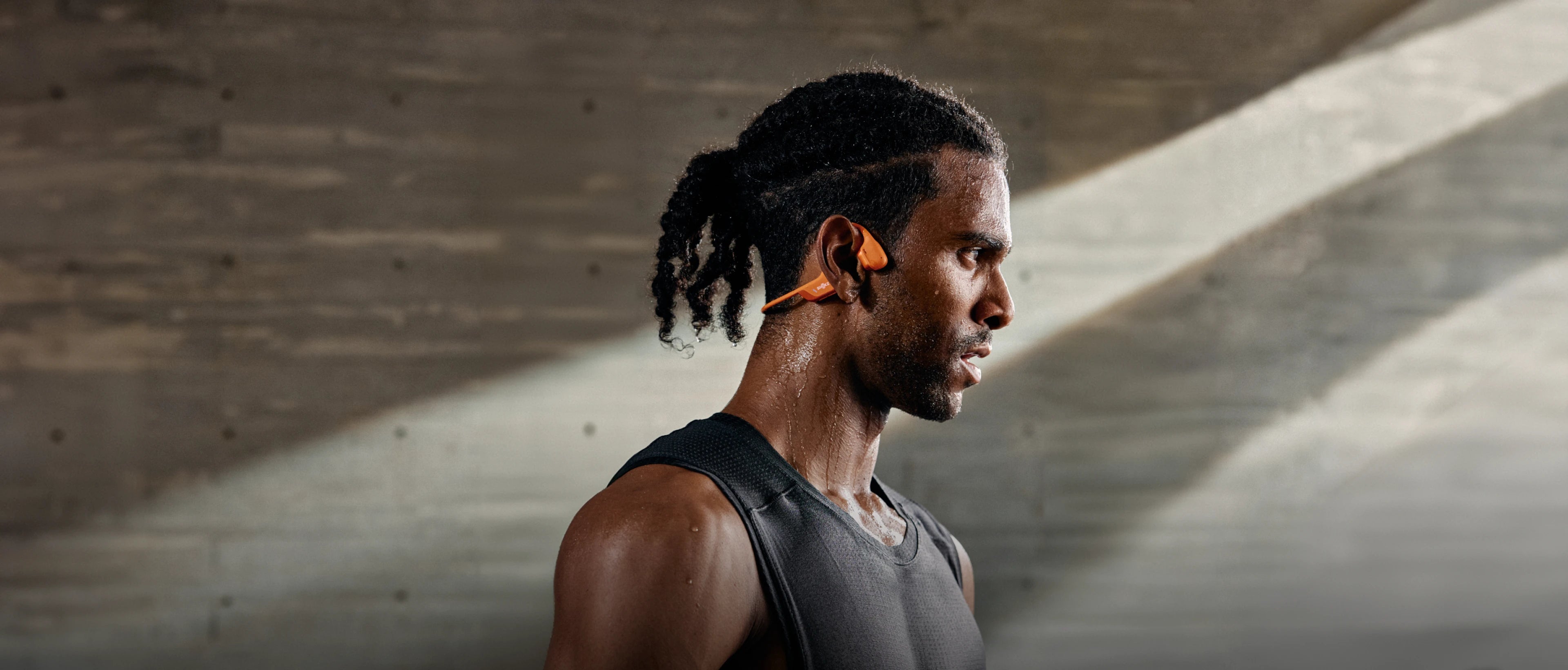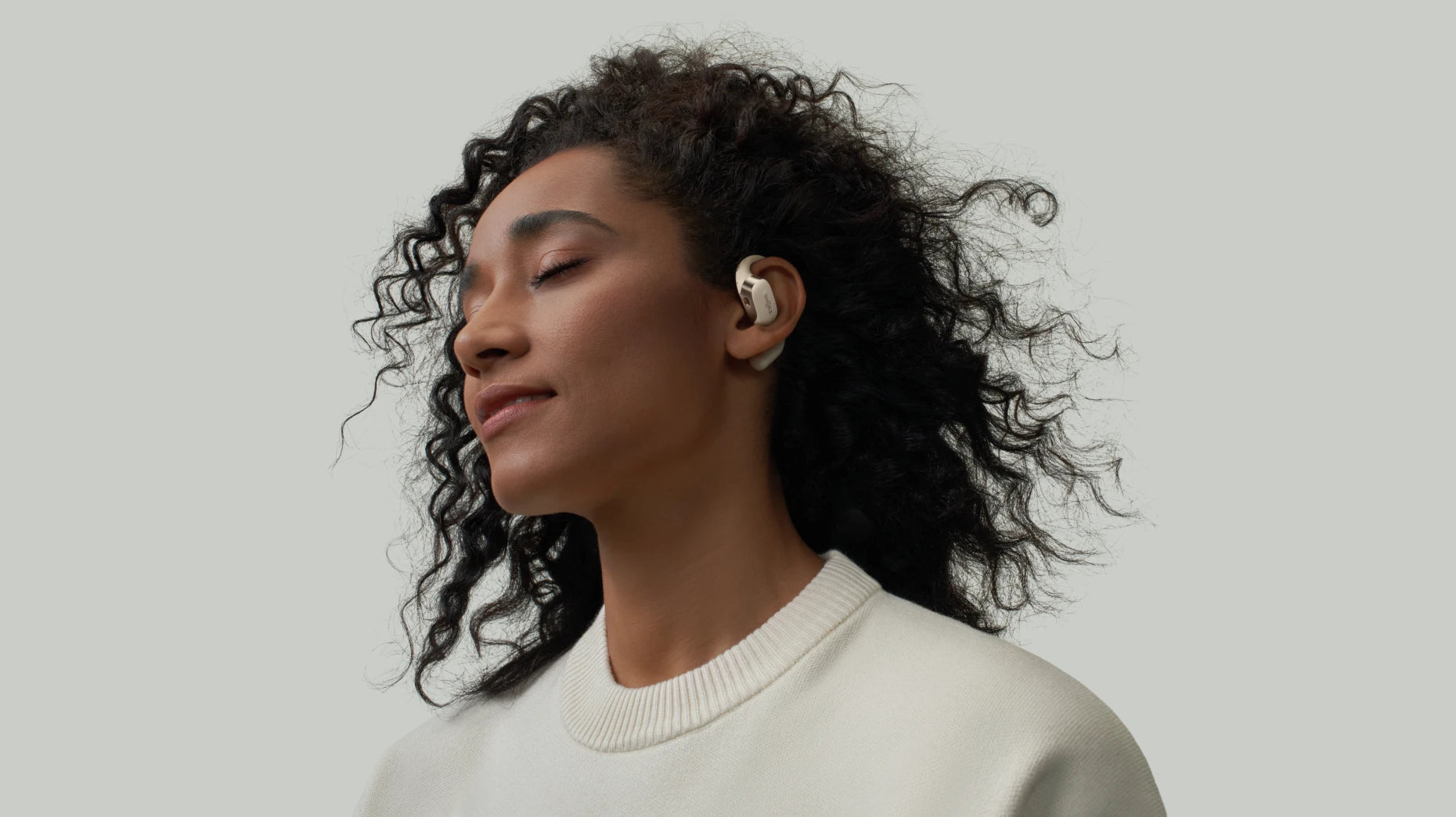Best Headphones for Hearing Aids: Safe, Comfortable & Wireless
Choosing the right headphones for hearing aids can make a meaningful impact on your daily life. And with so many designs and technologies available, it can be hard to find the perfect fit that delivers crisp sound without discomfort or interference. In this article, we’ll discuss the best hearing aid headphones, including Bluetooth headphones with hearing aids, and explain how to use them safely and effectively.
Can You Wear Headphones with Hearing Aids?
The short answer is yes. You can wear headphones with hearing aids, but compatibility isn’t always guaranteed, and it’s contingent on the type of hearing aid and headphone design. Because not all combinations work or fit well together, it’s important to understand your setup for optimal comfort and performance.
Here are three of the main hearing aid types and their respective compatibilities with headphones:
-
Behind-the-Ear (BTE): These sit behind your ear and have tubing that extends into the ear canal. With these, it’s best to avoid over-ear or on-ear headphones, which may press against your hearing aids, causing feedback or discomfort.
-
In-the-Ear (ITE) and Completely-in-Canal (CIC): These fit either entirely or mostly inside your ear. Because of this, they’re more compatible with most headphone styles, including in-ear or over-ear headphones.
When combining hearing aids and headphones, the main challenge you’ll encounter is potential feedback. This is basically a high-pitched whistling sound that’s caused by amplified audio leaking back into the hearing aid microphone. While the noise itself isn’t damaging to your ear, it’s unpleasant and avoidable. To do so, opt for hearing aids with adjustable settings – some can change microphone directionality – or headphones that minimize sound leakage.
Also, be sure to keep your volume at safe levels. Hearing aids already amplify sound, so adding gratuitously loud headphone audio can cause discomfort or even damage. Always start low and increase gradually as needed.
What Types of Headphones Work Best with Hearing Aids?
Finding the best headphones to use with hearing aids depends on your personal hearing needs, lifestyle, and type of device. Here are the top categories that pair well with modern hearing aids.
Over-Ear Headphones (Circumaural)
Over-ear headphones are often the most comfortable option for hearing aid users, especially for those wearing BTE devices. Their large earcups cover the ears completely without pressing directly on the hearing aids. This design helps seal your ears, thereby minimizing feedback and ensuring consistent sound quality. Here are the main advantages:
-
Comfortable fit: The ear cushions sit around the ear, not on top of it.
-
Noise isolation: Blocks external sounds for sharper audio clarity.
-
Reduced interference: Less direct pressure on the hearing aids translates into less sound leakage.
When shopping for over-ear headphones, look for models with wide, padded earcups and adjustable headbands. The goal is to prevent physical contact between the headphone speaker and the hearing aid microphone.
Some top picks in this category are the Bose QuietComfort Ultra – for noise control – and the Sennheiser Momentum 4 Wireless – for long wear and comfort.
If you’ve ever wondered whether there were headphones that look like hearing aids, you should check out bone conduction headphones, which often use a similar ear-hook design. Instead of sending sound waves through your ear canal, they transmit vibrations through your cheekbones directly to your inner ear, bypassing the eardrum entirely.
This makes them perfect headphones for hearing aid users, especially those who wear CIC or ITE devices or have partial hearing loss. Because they don’t cover or insert into the ear, there’s no interference with the hearing aid itself. Here are the main advantages:
-
Open-ear design: Keeps ears free and ventilated.
-
No Interference: Works alongside hearing aids without sound distortion.
-
Safety: Can stay aware of surroundings.
-
Comfort: Lightweight, secure fit for long periods.
When it comes to bone conduction, the Shokz OpenRun Pro 2 are the best headphones for hearing aid users who want a wireless, comfortable, and safe solution. Not only do they pair easily via Bluetooth but they also deliver excellent sound clarity without blocking ambient noise.
What’s the Differences between Over-ear Headphones and Bone Conduction Headphones for Hearing Aid?
|
Feature
|
Over-Ear Headphones
|
Bone Conduction Headphones
|
|
Fit
|
Encloses the ear
|
Sits on cheekbones
|
|
Interference
|
Low, but possible with large BTEs
|
None
|
|
Sound Quality
|
Richer bass and noise isolation
|
Clear mids and highs, ambient awareness
|
|
Comfort
|
Better for stationary use
|
Better for active use
|
|
Ideal Scenarios
|
Immersive listening, travel
|
Outdoor activities, workouts
|
Expert Tips for Using Headphones with Hearing Aids
-
Adjust Hearing Aid Programs
Many modern hearing aids come with app-based settings for different listening environments. Use a “streaming” or “music” mode when wearing headphones for balanced audio.
-
Use Audio Equalizer Apps
Fine-tune treble, bass, and mid frequencies for clearer speech or music.
-
Consult Your Audiologist
They can recommend hearing aid/headphones combinations tailored to your specific hearing profile and ensure Bluetooth pairing doesn’t conflict with your existing devices.
-
Avoid Moisture and Heat
Be sure to keep both devices clean and dry. Sweat or humidity can cause temporary interference between hearing aids and headphones.
-
Test Different Fits
Try different designs to find the pair that provides all-day comfort.
FAQs about Headphones for Hearing Aids
Q1. What headphones do audiologists recommend?
A1. Audiologists often recommend over-ear headphones or bone conduction headphones for those using hearing aids. These types reduce interference and provide optimal sound delivery. Brands like Shokz and Bose consistently rank as the best headphones to use with hearing aids.
Q2. Who should not use bone conduction headphones?
A2. People with sensorineural hearing loss or specific inner ear conditions may not benefit from bone conduction technology. When in doubt, always consult your hearing specialist.
Conclusion
The right combination of hearing aids and headphones can really transform your listening experience. Whether you prefer the immersive comfort of over-ear headphones or the open design of bone conduction models, today’s options make it easy to find the best headphones for hearing aids that match your lifestyle, safely and comfortably.





